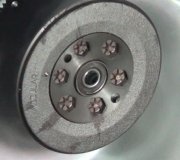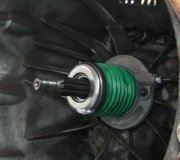[/quote:1e6e5d5cc3]
BLEEDING HYDRAULIC SYSTEM
CAUTION:DO NOT use silicone, mineral or paraffin base oil in clutch hydraulic system, or damage to rubber parts in cylinders may occur.
NOTE:Bleeding is necessary if system has been opened (line disconnected, etc.) Or if air has been drawn into system due to low fluidlevel in reservoir.
Loosen clutch master cylinder nuts to ends of threads on "U" bolt. DO NOT remove master cylinder. Clean reservoir cap. Remove reservoir cap and diaphragm. Wrap a piece of mechanics wire around left hood strut bracket, ensuring wire is accessible from bottom of vehicle.
Raise and support vehicle. Remove actuator cylinder, leaving hydraulic line connected. Hang cylinder from mechanics wire. Lower vehicle. Grasp actuator cylinder, press actuator cylinder push rod into bore about.78" (20 mm) and hold in this position. Have an assistant install diaphragm and cap. Release actuator cylinder push rod.
Hold actuator cylinder vertically with push rod end facing down. Ensure actuator cylinder is lower than master cylinder. Press push rod into actuator cylinder with short.39" (10 mm) strokes. Check for air bubbles in reservoir. If bubbles are present, continue pressing push rod into actuator cylinder until bubbles no longer enter reservoir.
Raise and support vehicle. Remove actuator cylinder from mechanics wire. Install actuator cylinder. Lower vehicle. Remove mechanics wire. Tighten clutch master cylinder nuts. Fill reservoir
Thursday, August 2nd, 2007 AT 4:37 PM


